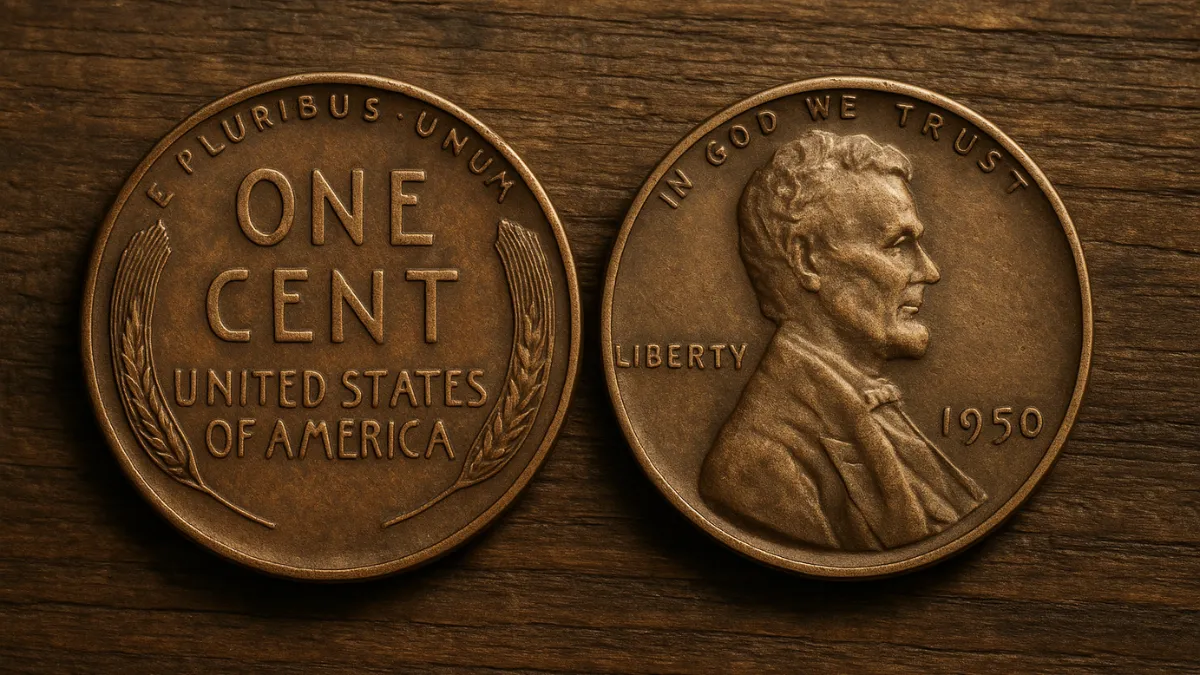The Lincoln Wheat Penny, once a common coin in American pockets, is now drawing attention for its astonishing value. One rare version of this classic coin has recently been valued at an incredible $991,000. What’s even more shocking? Some of these rare coins could still be hiding in everyday circulation, waiting to be found.
A Brief History of the Lincoln Wheat Penny
First issued in 1909 to celebrate Abraham Lincoln’s 100th birthday, the Lincoln Wheat Penny was the first U.S. coin to show a real person—President Lincoln—on its front. The reverse design includes two wheat stalks, representing prosperity and American agriculture. Created by artist Victor David Brenner, this design earned the coin its famous nickname.
Minted until 1958, the Lincoln Wheat Penny underwent various design and production changes over the years. While most are very common and only worth their face value, a few rare types have become highly prized among collectors.
The Nearly Million-Dollar Penny
The nearly $1 million Lincoln Wheat Penny is probably one of the rarest types, like the 1943 copper penny or the 1909-S VDB edition. In 1943, the U.S. Mint switched to steel pennies to save copper for wartime needs. However, a few copper coins were accidentally produced. Only around 20 of these are believed to exist, and they are considered some of the most valuable coins in American history.
Another valuable version is the 1909-S VDB, which prominently displays the designer’s initials and was minted in limited quantities in San Francisco. With only about 484,000 made, it remains one of the most sought-after Lincoln Wheat Pennies.
How Could It Still Be in Circulation?
While it may seem unlikely, these rare pennies can still be found in circulation. Coins can last for many decades. Some people may unknowingly spend a valuable coin because they’re unaware of its significance. Estate cleanouts, loose change jars, or routine banking transactions can send these treasures back into public hands without anyone noticing.
Thanks to rising interest in coin collecting and viral stories about valuable finds, more people are starting to inspect their spare change in hopes of discovering a hidden gem.
What to Look For in Your Change
Want to know if your penny is a treasure? Here are some tips:
- Check mint marks and dates: Look for coins from 1909–1958 with small “S” or “D” mint marks, which indicate San Francisco or Denver mints.
- Spot the wheat design: The presence of two wheat stalks on the reverse means you have a Lincoln Wheat Penny.
- Test 1943 pennies: If it looks like copper and doesn’t stick to a magnet, it could be a rare 1943 copper version.
- Look for minting errors: Coins with double images, misaligned strikes, or other unique flaws are often highly collectible.
FAQs
Q1: What is the Lincoln Wheat Penny?
A: This is a U.S. cent minted from 1909 to 1958, featuring Abraham Lincoln on the front and wheat stalks on the back. It was the first regular coin to display a real historical figure.
Q2: Why is one of these pennies worth $991,000?
A: Extremely rare varieties like the 1943 copper penny or the 1909-S VDB are valuable due to their low numbers and historical significance. These rare examples have fetched prices close to $1 million at auctions.
Q3: What’s unique about the 1943 copper penny?
A: In 1943, most pennies were made of steel due to copper shortages during World War II. However, a few copper coins were mistakenly minted. These rare survivors are now among the most valuable U.S. coins.
Q4: Is it possible for a rare penny to still be in circulation?
A: Yes, it is. Pennies can remain in use for decades. Rare coins can slip through unnoticed in everyday transactions or be stored away for years before being reintroduced into circulation.
Final Thoughts
The idea that a penny worth nearly a million dollars could still be lying unnoticed in a change jar or wallet adds thrill to the world of coin collecting. One of these rare Lincoln Wheat Pennies could be sitting right under your nose.
So, the next time you receive a handful of coins, take a closer look. That ordinary-looking penny might just be the lucky find that changes your life.
Susan is a seasoned finance writer with a knack for breaking down complex money topics into clear, actionable advice. With years of experience in personal finance, investing, and market trends, she empowers readers to make smarter financial decisions. Her work has been featured in leading finance blogs and publications, where she combines sharp analysis with relatable storytelling. Whether it’s budgeting, wealth-building, or decoding the latest economic shifts, Susan’s mission is to help people take control of their financial future with confidence.
